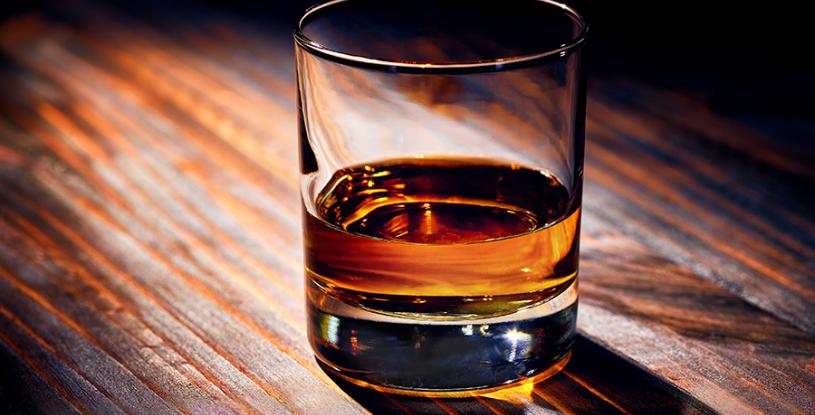Rye whiskey is a star. That means distilleries these days are experimenting with ryes that bring a 21st-century sensibility to this traditional American spirit, often by incorporating unique finishes or blends.
But the basics of production haven’t changed much since the 18th century when George Washington distilled his own rye whiskey. The unique challenges of processing rye grain still require skill, patience and determination. Because it is “sticky,” rye grain is notoriously difficult to handle and process. Just ask the team at Far North Spirits, a Minnesota craft distillery about 25 miles from the Canadian border.
Far North evaluated several varieties of rye during processing and developed a rating system for their ease of use, starting with 5 as the easiest, down to 1 as the most difficult. The scores cover “ease of milling, adjustment of standard enzyme package during the cook process to achieve workable viscosity,” ease of transfer to fermentation tanks, and cooker cleanup time.
“Another way to look at this score is as a ‘swear factor’ with a score of 4-5 meaning that one could comfortably cook this variety in front of your grandmother, all the way down to a score of 1 recommended to be cooked in the company of sailors/distillers only,” Far North explains on its website.
At MGP, the nation’s No. 1 producer of rye whiskey, Master Distillers embrace and conquer the challenges of working with rye. Corporate Director of Engineering Matt Greeno, who’s also a Master Distiller, talks about successfully creating ryes.
The grain. The rye flavor is comparable to black pepper. And it’s spicy. But not overwhelmingly so. Phenolic compounds unique to rye grain provide a variety of aromas and flavors. These compounds are transformed at fermentation into flavorful aroma and taste characteristics, from a sweet, minty note, like clove, to floral, leather, smoky, baking spice, even bacon.
Grain quality. Samples of the rye that MGP purchases are collected at every stage of the supply chain. Each sample is screened by a sensory panel at MGP’s history distillery in Lawrenceburg, Indiana, which meets daily to assess grains for defects due to improper storage or transport. If there’s any hint of the grain not meeting MGP standards, the truckload is rejected.
Grain processing. Rye grain is composed of 50% to 60% starch and about 9% to 10% protein. The rest is fat, ash and fiber, which are non-fermentable and can’t be turned into alcohol. Rye contains a higher portion of complex polysaccharides, sugars that are not easily digestible or convertible to simple sugars such as glucose. As a result, when rye grain is hydrated to create mash, it becomes thick and “sticky,” making it difficult to heat and then cool before it’s pumped to the fermentation tank. During fermentation, the sticky mash binds together, creating difficulty in moving the mash and later in pumping it to the distillation process.
Once the alcohol is stripped out, the whole stillage that remains cannot be fermented and the leftover fats and fibers must be dried for another use as animal feed. Again, the “sticky” characteristic causes a problem as the residue sticks to the sides of any dryers or storage silos. The final product is a granular feed that can be difficult to store and transport.
High-Rye Whiskey
Take the challenges mentioned above and multiply them when creating a high-rye mash. More rye=more headaches from the sticky residue. But MGP excels at creating 95% rye whiskey (with 5% barley malt), which Matt describes as “Our claim to fame.” This high-rye spirit is described as: Caramel and vanilla forward notes fade to a complex spice and smoky body. The rye spice in the body carries into a long finish.
The 95% rye is the basis for several popular American ryes. As Uproxx noted in early 2022, “American rye whiskey and MGP of Indiana are inextricably connected. The Indiana distillery’s 95 percent rye whiskey (with five percent malted barley rounding out the recipe) is the rye whiskey that reinvigorated the whiskey style over the last decade. There’s a pretty big chance that if you’ve ever savored a rye whiskey over the last ten years, it was from Indiana – even if it’s bottled in Maryland, Vermont, Tennessee, or yes, Kentucky.”
MGP offers more rye-focused spirits: 51% rye whiskey (corn 45%, barley malt 4%), along with “high rye” bourbons: 36% rye bourbon (corn 60%, barley malt 4%) and 21% rye bourbon (corn 75% and barley malt 4%.)
Widely considered The Masters of Rye, the Master Distillers at MGP fully understand the art of making rye whiskey. What sets them apart, Matt says, is they do it at scale.
“There’s the art of making rye whiskey, and the art of making rye whiskey at scale,” Matt says. “What we do at scale is unlike anyone else in the world.”

